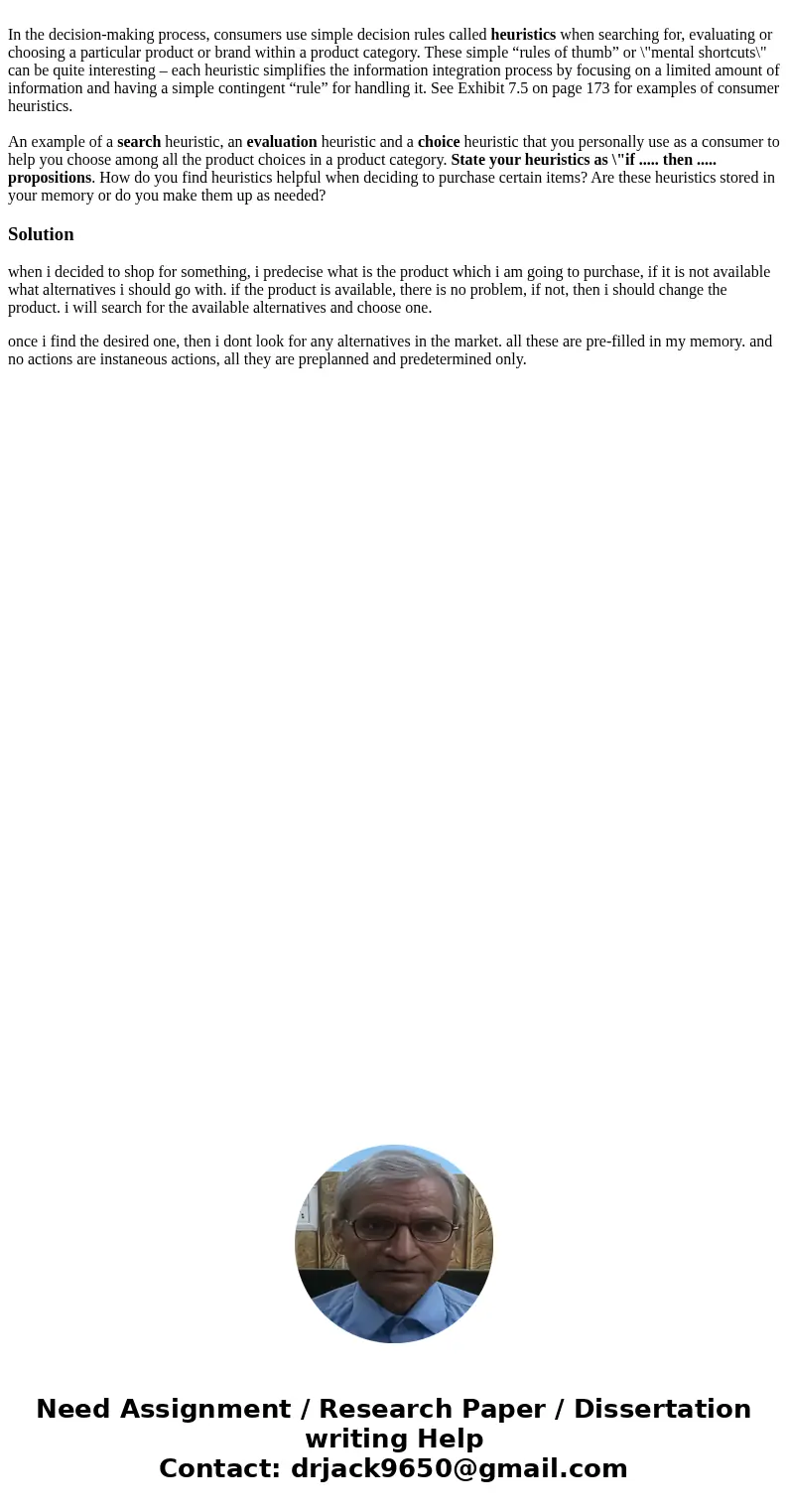In the decisionmaking process consumers use simple decision
In the decision-making process, consumers use simple decision rules called heuristics when searching for, evaluating or choosing a particular product or brand within a product category. These simple “rules of thumb” or \"mental shortcuts\" can be quite interesting – each heuristic simplifies the information integration process by focusing on a limited amount of information and having a simple contingent “rule” for handling it. See Exhibit 7.5 on page 173 for examples of consumer heuristics.
An example of a search heuristic, an evaluation heuristic and a choice heuristic that you personally use as a consumer to help you choose among all the product choices in a product category. State your heuristics as \"if ..... then ..... propositions. How do you find heuristics helpful when deciding to purchase certain items? Are these heuristics stored in your memory or do you make them up as needed?
Solution
when i decided to shop for something, i predecise what is the product which i am going to purchase, if it is not available what alternatives i should go with. if the product is available, there is no problem, if not, then i should change the product. i will search for the available alternatives and choose one.
once i find the desired one, then i dont look for any alternatives in the market. all these are pre-filled in my memory. and no actions are instaneous actions, all they are preplanned and predetermined only.

 Homework Sourse
Homework Sourse